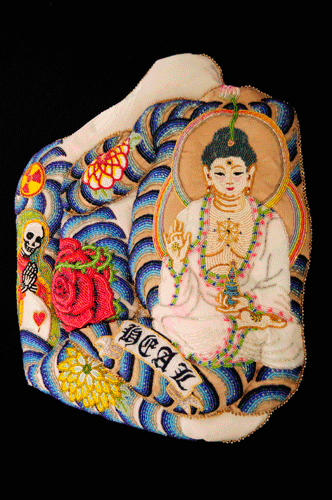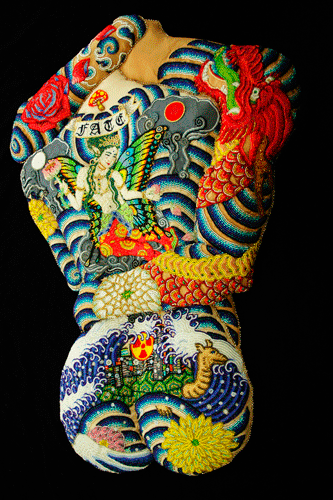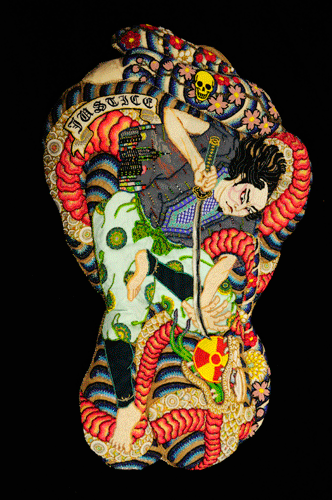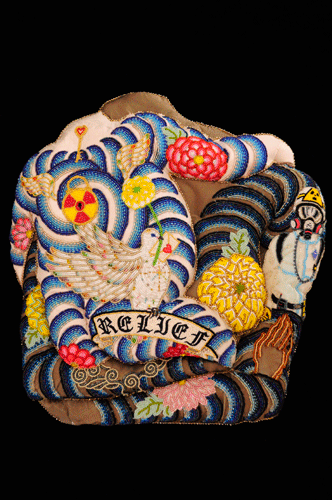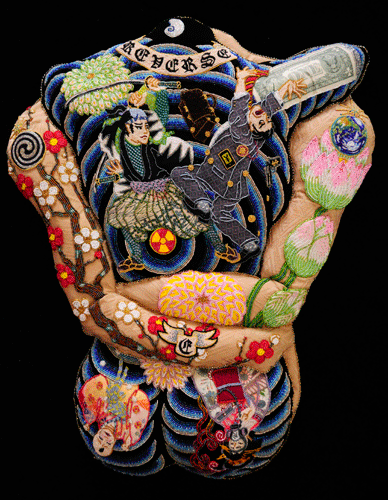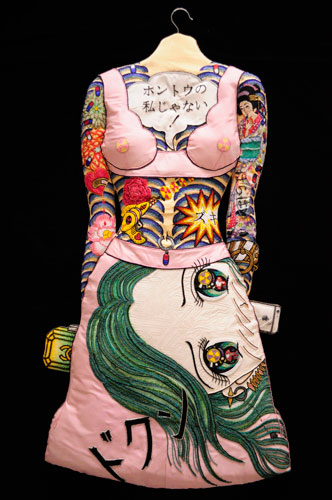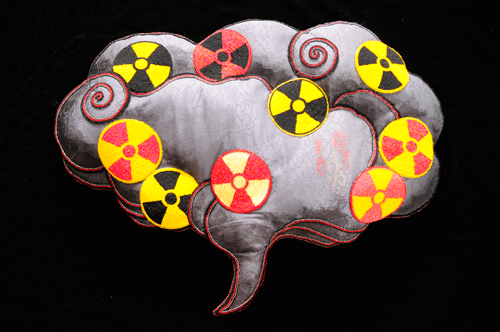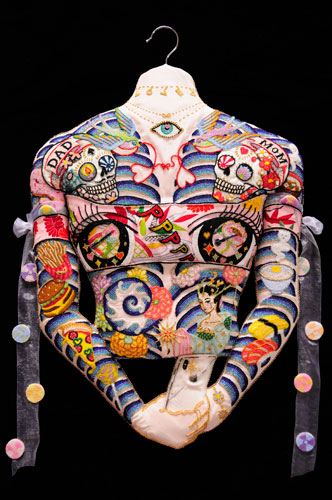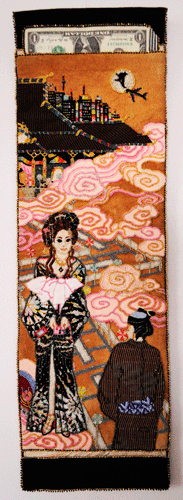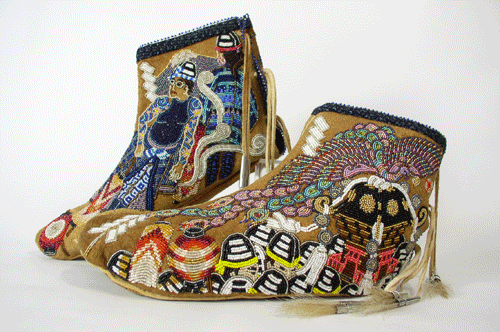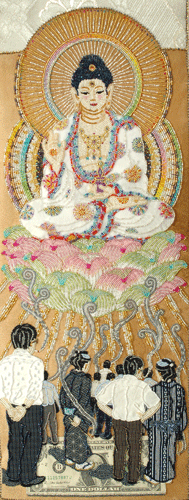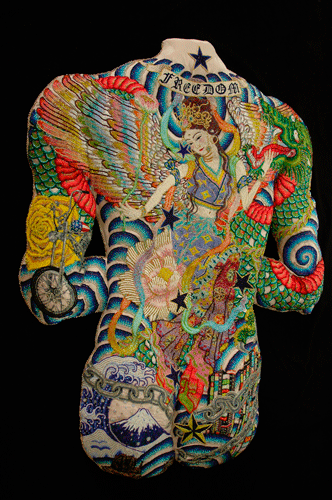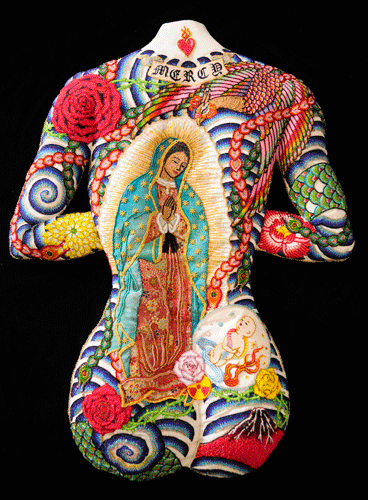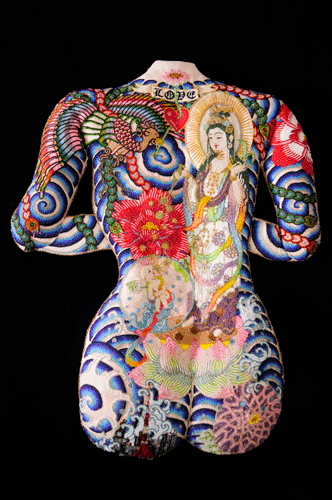ARTIST STATEMENT
The 2011 earthquake-tsunami off the Sendai coast in Japan, and the resulting Fukushima nuclear reactor meltdown, made international headlines the world over. It was one of the direst natural disasters of recent times. Yet today Japanese society has stoically subdued continuing anxieties over these traumatizing events, and despite the prolonged environmental effects of radiation fallout, daily life superficially returns to normal.
This catastrophe and her fellow countrymen’s apparent inability to openly discuss the adversity, is the context against which Bangkok-based Japanese artist Eri Imamura creates her poignant fiber installation The Nippon Phenomenon.
An artist who strives to reconcile the material entrapment of urbanism with an animistic desire to reconnect with nature, her elaborately crafted vibrant textile compositions employ expertise gained from formal schooling in classic kimono design and pueblo beading artistry. She is also influenced by the spiritualism in traditional Japanese tattoo designs.
Physically disconnected from the tragedy, Imamura subverts geographic distance by submerging her psyche into the surreal fictional world of Manga. Conscious to Japan’s centuries-old visual history of story telling that transcend to the pulp Manga illustrations she grew up consuming, she expresses empathy and disillusionment by mythologizing herself into a combative superhero to overcome the unseen radioactive threat.
In The Nippon Phenomenon, Imamura has created a new interconnected narrative series of six beaded wall hangings from original antique kimono cloth. The installation comprises three-pairs of life-size soft sculpture torsos replete with vibrant doe-eyed cartoon characters and expressive iconography. Looming above are toxic radiation clouds, all fronted by an ocean floor of ticker tape and beads shaped into symbolic wave and radiation imagery.
Beneath the bold Pop veneer and Manga semiotics, Imamura explores how trauma is dealt with on a personal, collective, and national level. Within this delicate and highly emotive subject are associations to cultural coding and social conformism –including gender stereotyping. Her vibrant textural forms are also layered with psychological indicators to denial, escapism, resilience, fallibility, and healing.
Re-contextualising antique kimono tailoring techniques and Japanese tattoo designs with Native American beading aesthetics and construction, Imamura’s three-dimensional torso forms combine cross-cultural artisan heritage to manifest an idiosyncratic creative methodology. Spending three-months to produce a single piece, her meticulous hands-on production process is testament to how a contemporary artist can preserve and reinvigorate marginal craft forms into something imaginatively heterogeneous and truly breathtaking.
